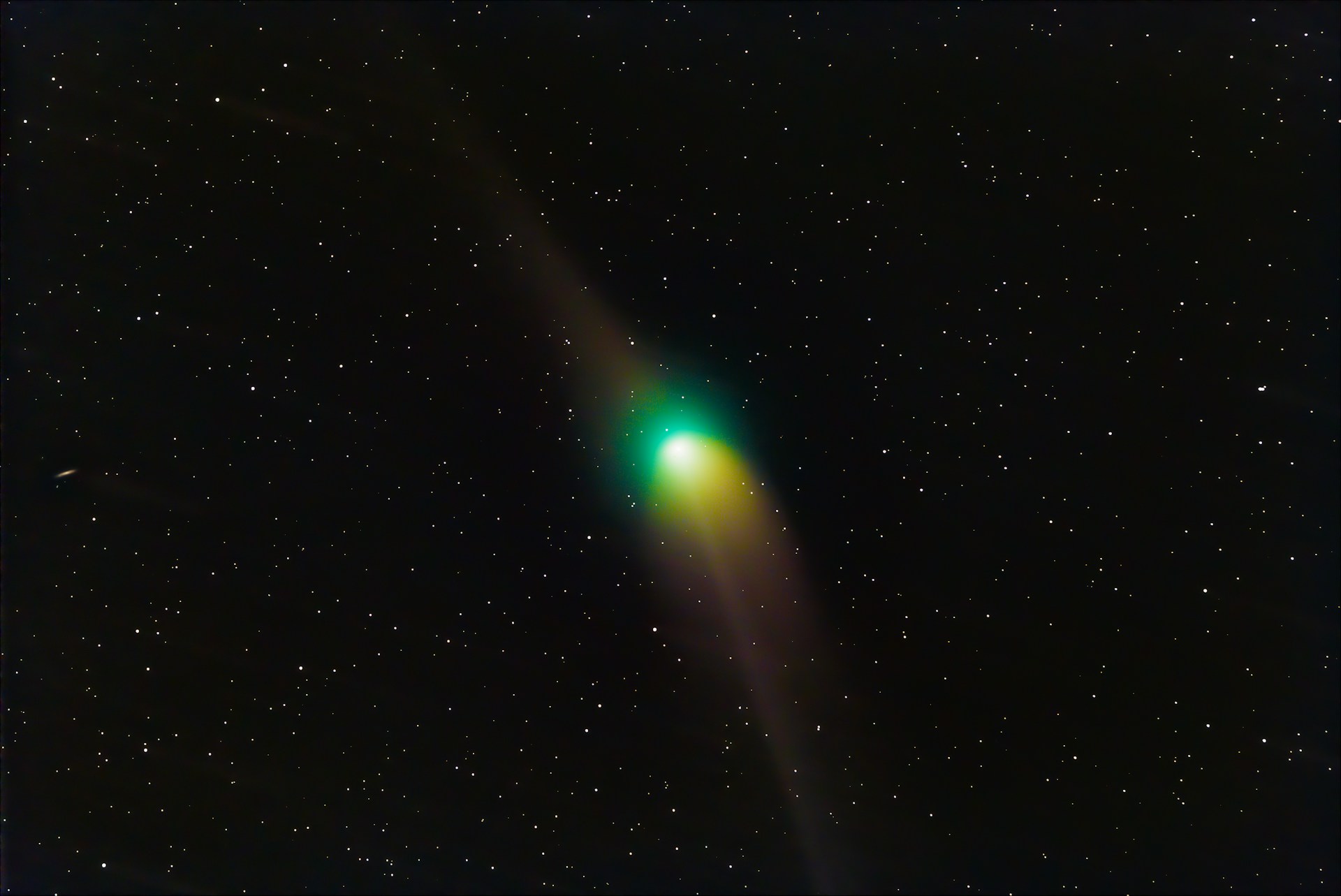Science
Scientists Examine 3I/ATLAS: Alien Artifact or Cosmic Oddity?

A recent claim regarding the interstellar object known as 3I/ATLAS has sparked intense debate in both scientific and popular circles. Dr. Aris Thorne, a materials scientist reportedly consulting for the Department of Homeland Security, has suggested that 3I/ATLAS may be constructed from an “artificial composite material,” indicating potential origins from an advanced civilization. This assertion was first reported by a US Homeland Security news source, igniting discussions that blend scientific inquiry with elements of science fiction.
3I/ATLAS was first detected on July 1, 2025, by the ATLAS telescope in Hawaii. With a size estimated at 5.6 kilometers wide, the object travels on a rapid trajectory that only briefly brings it through our solar system. It is the third interstellar object confirmed, following 1I/ʻOumuamua in 2017 and 2I/Borisov in 2019. As scientists began to study its properties, they quickly recognized it was unlike any traditional comet or asteroid.
One of the most notable theories comes from Harvard astrophysicist Avi Loeb, who posits that 3I/ATLAS might not be a natural object. Recent analyses of the object’s gas plume have detected venting of nickel with a striking absence of iron. Loeb emphasizes that this chemical signature has not been observed in any natural celestial body. The compound being emitted, nickel tetracarbonyl, is known to humanity primarily for industrial applications, particularly in aerospace technology.
Researchers have also noted peculiar features about 3I/ATLAS, including an unusual “anti-tail,” a stream of material that appeared to be directed toward the Sun. Recent observations have shown a dramatic change, with the anti-tail disappearing and being replaced by a classic tail pointing away from the Sun. Some interpret this shift as a controlled maneuver, suggesting that the object may not be a simple rock or ice formation.
Adding to the intrigue are questions surrounding NASA’s transparency. The agency has yet to release high-resolution images of 3I/ATLAS taken by the Mars Reconnaissance Orbiter. Reports from a purported insider within the European Space Agency (ESA) claim that the object is emitting a constant “engine-like sound,” which has fueled speculation regarding its true nature. Critics argue that the official narrative seems to downplay the more extraordinary possibilities surrounding 3I/ATLAS.
As discussions unfold, the scientific community remains divided. Some scholars view the object as an intriguing cosmic anomaly, while others assert that it may represent the first tangible evidence of extraterrestrial technology. The object is expected to make its closest approach to the Sun on October 29, 2025, a moment that could provide further insights into its composition and trajectory.
As 3I/ATLAS journeys through our solar system, the world is poised at a critical juncture. Will this enigmatic visitor turn out to be a mere natural curiosity, or could it signify humanity’s first encounter with an alien artifact? The upcoming fiery approach to the Sun may soon provide answers that could reshape our understanding of our place in the universe.
-

 Entertainment2 weeks ago
Entertainment2 weeks agoAndrew Pierce Confirms Departure from ITV’s Good Morning Britain
-

 Health4 months ago
Health4 months agoFiona Phillips’ Husband Shares Heartfelt Update on Her Alzheimer’s Journey
-

 Health4 months ago
Health4 months agoNeurologist Warns Excessive Use of Supplements Can Harm Brain
-

 Science2 months ago
Science2 months agoBrian Cox Addresses Claims of Alien Probe in 3I/ATLAS Discovery
-

 Science2 months ago
Science2 months agoNASA Investigates Unusual Comet 3I/ATLAS; New Findings Emerge
-

 Entertainment1 week ago
Entertainment1 week agoGogglebox Star Helena Worthington Announces Break After Loss
-

 Entertainment2 months ago
Entertainment2 months agoLewis Cope Addresses Accusations of Dance Training Advantage
-

 Entertainment1 month ago
Entertainment1 month agoTess Daly Honoured with MBE, Announces Departure from Strictly
-

 Entertainment5 months ago
Entertainment5 months agoKerry Katona Discusses Future Baby Plans and Brian McFadden’s Wedding
-

 Science2 months ago
Science2 months agoNASA Investigates Speedy Object 3I/ATLAS, Sparking Speculation
-

 Entertainment5 months ago
Entertainment5 months agoEmmerdale Faces Tension as Dylan and April’s Lives Hang in the Balance
-

 World4 months ago
World4 months agoCole Palmer’s Cryptic Message to Kobbie Mainoo Following Loan Talks










